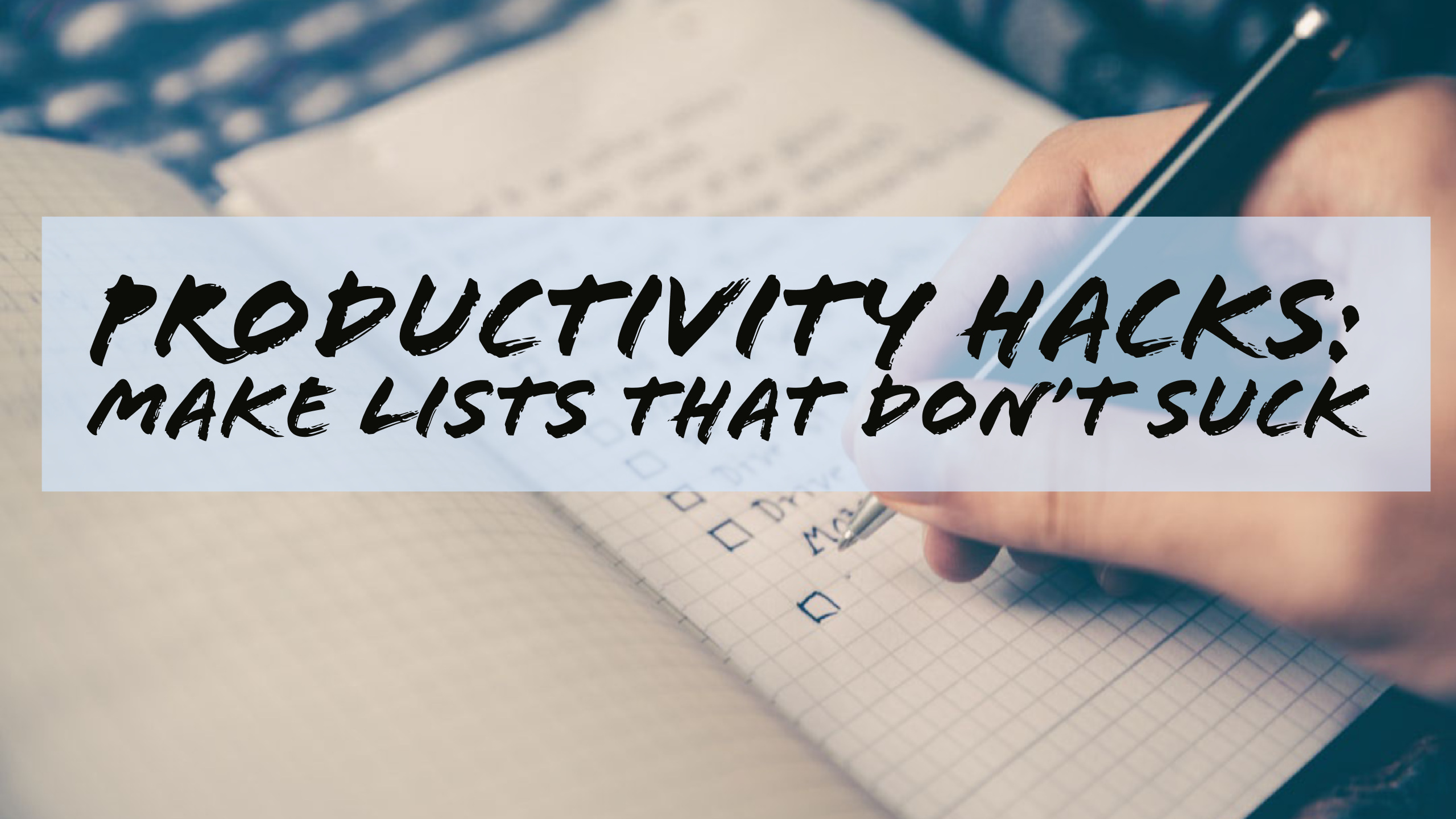
Productivity Hacks: Make Lists that Don’t Suck
I’m a pro at making lists that suck. You know when the number of things you have to do is so overwhelming that you just have to write them down? Or those daily lists you make with all the things you want to get done, but inside, you know is completely unrealistic?
Yeah, those were my kind of lists.
The thing is to-do lists are great for productivity. But that’s if and only if they’re done well. Just scribbling down everything you need to do in list format and hoping you’ll be able to cross out most of them by the end of the day won’t cut it.
So how do you make lists that don’t suck? I’m glad you asked.
Use Separate Lists
You might have wildly varying items on your list, from work tasks like uploading a new blog post to personal goals like working out or studying Korean.
But we approach these goals differently, as we should. The work tasks on my list almost always get done on time, because they’re work. Someone’s counting on me to do them. The personal tasks not so much.
In school, we’re able to get away with putting everything on a to-do list – or those free school planners – because they were all work tasks. You might have listed homework and projects in your planner, but many of these were finished in the same day too (or they weren’t supposed to be, but you were a master of procrastination).
Personal goals are all on you. You might need to create systems to keep yourself accountable, like taking a class or finding a language partner. So keep work and personal tasks in separate lists, and be prepared to do a lot more work defining your personal lists.
Break Down Anything Too Vague or Large
Another reason we have difficulty accomplishing personal goals is that most of them are too vague. Or worse, they’re listed as a vague task with no ultimate goal in mind.
“Study Korean” has been on many, many lists of mine. But this list item sucks because:
- It leaves too many possibilities.
- It doesn’t actually tell me what to do.
- It doesn’t refer to a goal.
“Study” is an incredibly vague task. What is studying anyway? Is it using a textbook? Memorizing vocab? Watching Korean dramas and hoping you absorb the language?
Unless there are more details you’ve laid out behind the scenes in your brain, you’ll have a hard time motivating yourself to tackle this amorphous command to study.
On the other hand, if you use a textbook or website and plan to get through one module a week, your goals are suddenly much clearer. You can take your weekly goal and break it down into daily tasks. You can keep a list of long-term goals, but your daily to-do lists should only have small tasks.
Pro-Tip: Capture everything.
Originally I had a few more tips for this post, but then I started reading David Allen’s book Getting Things Done: The Art of Stress-Free Productivity. It sounds good, doesn’t it? Well, this book IS GOOD. And much of Allen’s system is focused on lists.
One of the first principles is to capture everything. Allen’s reasoning goes like this:
Most of the time, we waste mental energy trying to remember what we need to do. Instead of relying on our memory, we should everything out of our heads and onto paper. Or an app. Or your organizing system of choice. He includes personal and professional tasks alike, from planning a family trip to setting up client calls. The more comprehensive and reliable your capturing system is, the more your brain can rely on it and stop worrying.
I’m not even halfway through the book, but this seemed like a pretty good gem.
Other Productivity Hack posts:
#1. Productivity Hacks: Do Your Laundry
#2. Productivity Hacks: Eat Treats. All the Treats.